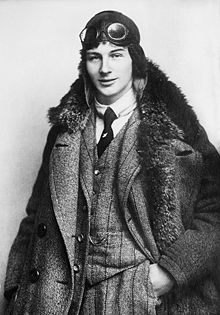Anthony Fokker
| Anthony Fokker | |
|---|---|

Fokker in 1912
|
|
| Born |
Anton Herman Gerard Fokker 6 April 1890 Blitar, East Java, Netherlands Indies (now Indonesia) |
| Died |
23 December 1939 (aged 49) Murray Hill Hospital, New York City, United States |
| Cause of death | pneumococcal meningitis |
| Nationality | Dutch, US |
| Occupation | Aircraft manufacturer |
| Spouse(s) |
Sophie Marie Elisabeth von Morgen (1919–1923), |
Sophie Marie Elisabeth von Morgen (1919–1923),
Anton Herman Gerard "Anthony" Fokker (6 April 1890 – 23 December 1939) was a Dutch aviation pioneer and an aircraft manufacturer. He is most famous for the fighter aircraft he produced in Germany during the First World War such as the Eindecker monoplanes, the Dr.1 triplane and the D.VII biplane.
After the treaty of Versailles forbade Germany to produce airplanes, Fokker moved his business to the Netherlands. There his company was responsible for a variety of successful aircraft including the Fokker trimotor, a successful passenger aircraft of the inter-war years. He died in North America in 1939. Later authors suggest he was personally charismatic but unscrupulous in business and a controversial character.
Anthony (Tony) Fokker was born in Blitar (then Dutch East Indies, now Indonesia), to Herman Fokker, a Dutch coffee plantation owner. Some sources say that he was born in Kediri. At that time, Blitar was a part of the 'Kediri Residency', a colonial administrative division the capital of which was in Kediri. When Fokker was four, the family returned to the Netherlands and settled in Haarlem in order to provide Fokker and his older sister, Toos, with a Dutch upbringing.
Fokker was not a studious boy and did not complete his high school education but he showed an early interest in mechanics, and preferred making things, playing with model trains and steam engines and experimenting with model aeroplane designs.
He devoted considerable effort to the development of a wheel that would not suffer from punctures, basically a wheel with a perimeter formed by a series of metal plates. This idea had been experimented with elsewhere and was already patented.
...
Wikipedia
